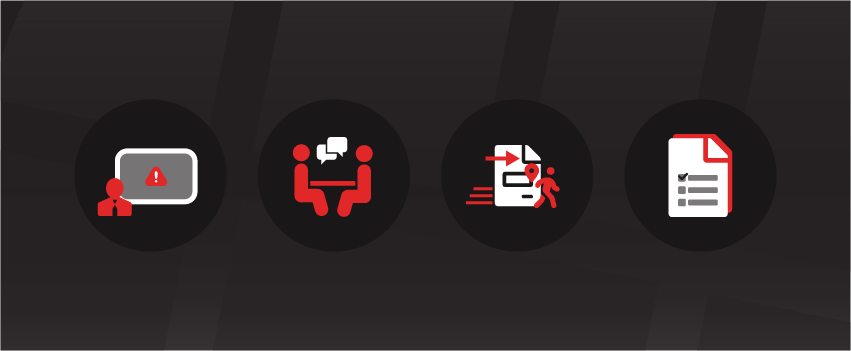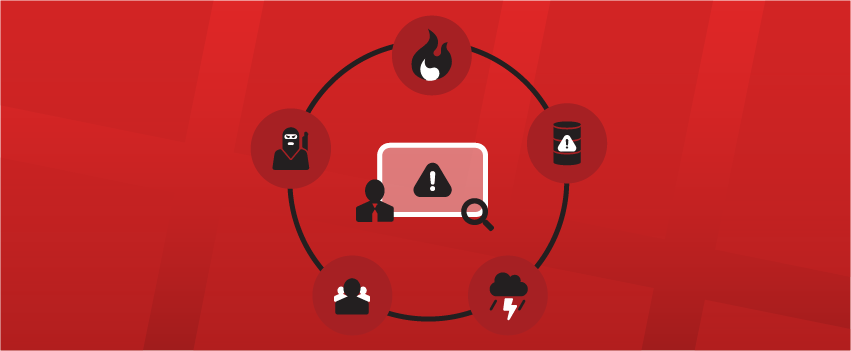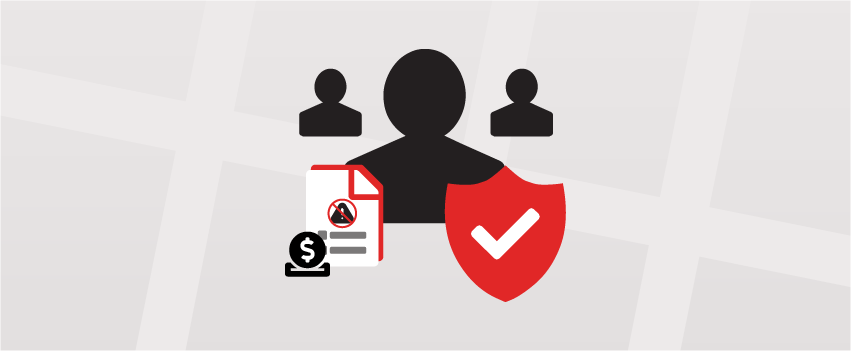Experienced Insights on Preparedness Training
Comprehensive, ongoing training is critical for proper development and execution of an emergency preparedness plan. Through this interview with Rodger Norcross, former fire chief and law enforcement officer, you’ll discover why training is imperative and what to consider when developing your training approach.

Question: Can you provide some details on your professional background as it applies to emergency preparedness planning?
Answer: I’ve worked with fire and EMS services for over 30 years and retired as a local fire chief in Ohio. During my time, I supported a lot of emergency preparedness planning, especially in relation to hazardous materials. Additionally, I have 28 years as a law enforcement officer and retired as the chief of my agency.
Since 2012, I’ve been working at the University of Findlay All Hazards Training Center as an instructor for HAZMAT training and school crisis training. I work with a range of entities, including fire departments and private industries, to complete their own emergency preparedness plans.

Question: Why is ongoing training important when it comes to emergency preparedness?
Answer: The worst thing an organization can do is write a plan, then put it on a shelf and never test it. In that scenario, you have not kept the plan updated, nobody will know what to do during an actual emergency and the plan will fail.
Any organization that has an emergency operations plan needs to test it prior to an actual emergency, primarily to ensure that the plan is as accurate and comprehensive as it can be. When some plans are developed, the actual development is siloed to only a few stakeholders; training ensures that all applicable stakeholders have a chance to provide input and adjustment recommendations as they are applicable.
For example, a school safety plan could be written by the school but without input from officials who will be helping execute the plan, like EMS or police. If the school completes a tabletop exercise with those individuals, this will allow them to provide feedback on the plan and adjust it to be as effective as possible. Emergency response training ultimately gives everyone a chance to review and revise the plan before you move further along in the process—or even have to execute on the plan.

Question: Which types of training can organizations complete? Are there multiple training methods organizations should take, including tabletop sessions and practice responses?
Answer: Companies should focus on a crawl – walk – run approach to training. Often, we see companies want to move right into a full-scale exercise before completing any other training, and it isn’t an efficient approach. If you go right into a full-scale exercise, employees and other stakeholders won’t know what to do, and the exercise will fail. You can then have disgruntled participants who are upset about their wasted time and frustrated with the poor execution.
Start with an orientation to help acclimate relevant stakeholders, including your employees, on what the plan is and why it is critical. Agencies fall short by not educating right away at the start of the process.
You can then move into completing a tabletop session, which is essential for emergency response training. Tabletop exercises get every relevant stakeholder—agency heads, policy makers and decision makers—sitting around discussing the plan. This helps us look at the functional aspects of the plan to make sure it works before completing a full training exercise; you need to evaluate the pieces of the plan before running full-scale training.
You can then work on a functional exercise, which is when you start to use personnel and test that piece of the puzzle. For example, if we need to include bussing into the response, how do we get the drivers in there? The functional exercise can focus more on the logistics and start moving equipment and people around to identify how the response will work.
Following any training exercise, the after-action report is critical. I’ve never seen an organization write an emergency preparedness plan, run an exercise on it and not encounter a gap with the plan. The after-action report helps to identify and address those gaps, and it’s how we learn what needs adjusted to ensure a proper response.
Remember: You can have the greatest emergency response plan in the world developed just to meet a mandate, but it will fail if you do not properly train on it or keep it updated. Develop the plan, train on the plan, continually evaluate the plan and keep all stakeholders informed on the plan. Continue to complete the tabletop and full-scale exercises to help your company stay prepared for applicable emergency situations.

Question: Which stakeholders should be involved in emergency preparedness training?
Answer: The big three that should always be involved in emergency preparedness training are:
- Police
- EMS
- Fire
Regardless of what your organization is, those three need to be included.
For a private company, you should also consider other participants, like human resources or public information. Public information can be especially important, as you’ll need someone trained and accessible to make statements to the media during an emergency situation.
Your organization can also consider non-traditional responders, including:
- Public utilities
- Street department
- Sewer and water department, especially for HAZMAT organizations
- Local bussing system, which can help transport employees from an emergency
Additionally, if unionization exists within your organization, include a union representative so you have someone aware of what to expect for the union members should an emergency occur.

Question: Are there specific emergencies that should always be trained on?
Answer: First and foremost, organizations need to be aware that they cannot plan for everything. Ultimately, the important thing to do is assess the specific risks for your company, including scenarios that may be low risk but high consequence. An active shooter incident, for example, is not a high risk of occurring ultimately—but if it does, it can have catastrophic consequences for your organization.
Other risks factors to consider include:
- Is there a potential for a fire hazard?
- Does your facility house hazardous materials?
- Do you deal with weather issues, like tornadoes, ice storms or hurricanes?
- Do you have external employees, like security guards or delivery drivers, who need to be accounted for in the plan?
I worked with an organization once that was assessing a hazardous materials scenario. We realized that the business had three different fire departments who would all respond to an emergency—but only one gate to enter and exit the facility that employees and delivery drivers were also using. Ultimately, that setup was not going to support a productive response.
During our tabletop exercise, we were able to identify an alternate gate that fire could utilize during a response to avoid any potential traffic flow issues. Ultimately, this facility did have a fire occur with a delivery truck and because the firetrucks were able to utilize the secondary gate, we were able to execute an appropriate response to the emergency. This example showcases why training like a tabletop exercise is critical; we were able to assess the issues, identify a solution, then ultimately be prepared when an emergency did occur.

Question: How frequently should organizations complete training and plan evaluation?
Answer: Training should ultimately be more than just checking a box.
While some mandates only require training once a year, I’d recommend that companies complete training twice a year and change up the drills that go along with the training. This consistent testing helps ensure that the plan is working—and ultimately that your employees know what to do. It’s especially crucial that supervisors and managers know what their roles are so they can support execution of the plan. You should also consider including plan training as part of orientation so that new employees are well-versed in emergency protocols.
Ultimately, the frequency is going to depend on the organization and what is realistic when it comes to resources and time, though. But, it’s only to a company’s favor to prioritize the testing. If an emergency occurs—and the response is poorly executed—it only hurts the business. It can slow down getting operations back up and running because if people aren’t working, the business isn’t making money.
Senior staff should be looking at the actual functions of the plan at least once a year for any adjustments, as protocols and risk factors rapidly change. Truthfully, a quarterly evaluation of plan functions would be ideal, especially for organizations that may experience high employee turnover. At a minimum, though, an annual review will suffice.

Question: How frequently should organizations assess their risks to identify potential new areas to train on?
Answer: Risk assessments should be constantly occurring; a company should always be evaluating potential threats and hazards. For a standard private company, annual review may be enough but for a HAZMAT facility, reviews should be much more consistent, especially as product inventories change.
Frequency of assessment will come down to what your organization does, though. Ensure that you are properly auditing your organization’s needs, continuing conversations with applicable stakeholders and understanding what frequency best aligns with your specific company.

Question: What can occur if organizations do not prioritize ongoing emergency preparedness training?
Answer: Protecting your employees is critical and if you aren’t prioritizing proper emergency preparedness, you’re only doing your employees a disservice. Your employees should be your most valued asset; without them, your business cannot function. You need to protect them and ensure they’re operating safely. This means having a plan in place that they understand in the event of an emergency.
There is also a financial aspect of not prioritizing training. The Occupational Safety and Health Administration (OSHA) can level civil fines and penalties against your company if you aren’t meeting the requirements of a safety plan or not properly training on the plan. These financial repercussions can hurt a company—and unnecessarily so.

Question: How can tools like StrataSite™ help improve ongoing training for emergency preparedness plans?
Answer: The biggest benefit to investing in StrataSite™ is the real-time nature of the platform. We can sit at a tabletop exercise and evaluate these plans and make the changes live as we are mapping everything out. Not much can beat making the changes during the actual exercise; it’s an effective and collaborative approach to preparedness training.
This tool also supports remote collaboration; no longer do people need to sit together in person to review and adjust emergency preparedness plans. This makes it more convenient and easily accessible for all stakeholders to provide their input.
StrataSite also allows us to select a generic, templated plan to run through an exercise on so we can see how a plan will work in many different scenarios. Overall, it gives us new opportunities to collaborate and understand fully how a plan will work should it unfortunately need to be executed on.

Discover the StrataSite™ Difference
StrataSite is your solution for accurate and effective emergency preparedness planning and training. As a secure, cloud-based preparedness tool, StrataSite enables project leaders to easily pinpoint and annotate action points in real-time for a collaborative emergency response.
Additionally, the StrataSite learning management system (LMS) is included with all StrataSite subscriptions and is a valuable tool to onboard and train stakeholders. Through the LMS, companies can:
- Create plan quizzes and upload review materials including PDFs, slideshows and videos
- Utilize dashboard metrics reporting to ensure all credentialed users are actively using the platform
- Access plan training easily through a simple, mobile-friendly design
Sign up for your free, no-obligation trial of StrataSite today.